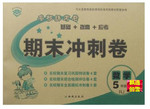题目内容
【题目】 Chinese Paper Cutting or Jianzhi is the first type of paper-cutting design, since paper was invented in the Eastern Han Dynasty in China.
It’s a very distinguishing visual art of Chinese handicrafts. The art form later spread to other parts of the world with different areas adopting their own cultural styles. After hundreds of year’s development, now they’ve become a very popular means of decoration among country folk, especially women. The paper-cuts are also used to decorate doors and windows, and therefore they’re sometimes referred to “chuang hua”, meaning Window Flower. Paper-cuts are chiefly used as decorations. However, today, Chinese paper-cuts are also used for religious and ceremonial purpose, and they’re buried with the dead and burned at funerals.
Chinese people believe the red paper-cuts on the door can bring good fortune and happiness to the whole family. The paper-cuts are more often seen during traditional Chinese festivals, particularly in Chinese New Year, the Spring Festival. They’re also given as gifts to friends or other family members.
Paper-cuttings aren’t produced by machine, but by hand. There’re two methods of manufacture (制造): one uses scissors, the other uses knives. Knife cuttings are fashioned by putting several layers of paper on a relatively soft foundation (衬底). Following a pattern, the artist cuts the motif into the paper with a sharp knife he usually holds vertically. The advantage of knife-cuttings is that considerably more paper cuttings can be made in one operation than with scissor cuttings.
It’s easy to learn about cutting a piece of paper but difficult to master it with perfection. One must grasp the knife in an upright fashion and press evenly (均匀地) on the paper with some strength. Flexibility is required but any hesitation will damage the whole image.
People find hope and comfort in expressing wishes with paper-cutting. For instance: for a wedding ceremony, red paper-cuttings are a traditional decoration on the tea set, the dressing table glass, and on other furniture. A big red paper character ‘Xi’ (happiness) is a traditional must on the newlywed’s (新婚夫妇) door.
【1】It can be learned from the second paragraph that ___________.
A.paper-cuts are mainly used as presents
B.females are better at paper-cutting than males
C.paper-cutting varies from area to area
D.paper-cuts are used in various ceremonies but funerals
【2】What is the fourth paragraph mainly about?
A.Forms of paper-cutting.B.Means of paper-cutting.
C.Advantages of knife cuttings.D.Characteristics of paper-cutting.
【3】From the fifth paragraph, we can learn that ___________.
A.paper-cutting requires great strength
B.pause in paper-cutting makes no difference
C.it is by no means easy to acquire paper-cutting skills
D.it is fashionable to learn paper-cutting
【4】The author develops the last paragraph by ___________.
A.using examplesB.making comparisons
C.analyzing causesD.describing processes
【答案】
【1】C
【2】B
【3】C
【4】A
【解析】
本文是一篇说明文。文章主要介绍了中国的剪纸。中国剪纸是剪纸设计的第一种类型,因为纸是在中国东汉时期发明的。这是一种非常独特的中国手工艺品视觉艺术。后来,这种艺术形式传播到世界各地,不同的地区采用了自己的文化风格。
【1】细节理解题。根据第二段中The art form later spread to other parts of the world with different areas adopting their own cultural styles.可知,后来,这种艺术形式传播到世界各地,各地采用了自己的文化风格。由此从第二段可以得知,剪纸因地区而异。故选C。
【2】主旨大意题。根据第四段中There’re two methods of manufacture: one uses scissors, the other uses knives.可知,有两种制造方法:一种是用剪刀,另一种是用刀。结合后文主要论述了不同的剪纸方法。由此可知,第四段主要讲了剪纸的方法。故选B。
【3】细节理解题。根据第五段中It’s easy to learn about cutting a piece of paper but difficult to master it with perfection.可知,学会剪一张纸很容易,但要完美地掌握它却很难。由此可知,掌握剪纸技能并不容易。故选C。
【4】推理判断题。根据最后一段中For instance: for a wedding ceremony, red paper-cuttings are a traditional decoration on the tea set, the dressing table glass, and on other furniture.可知,例如:在婚礼上,红色剪纸是茶具、梳妆台玻璃和其他家具上的传统装饰。由此可推知,作者通过举例子来对最后一段进行了阐述。故选A。

 课堂全解字词句段篇章系列答案
课堂全解字词句段篇章系列答案 步步高口算题卡系列答案
步步高口算题卡系列答案